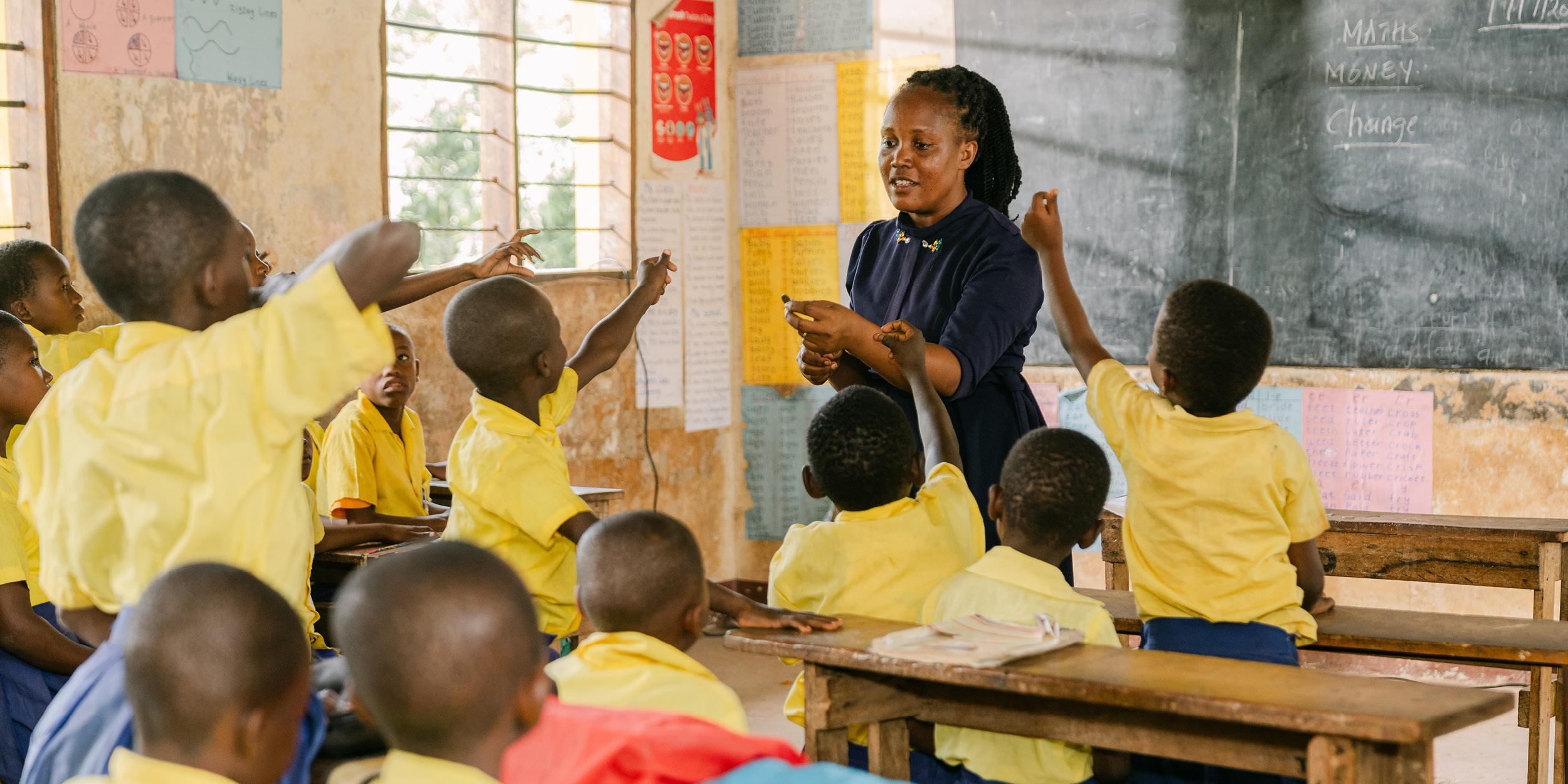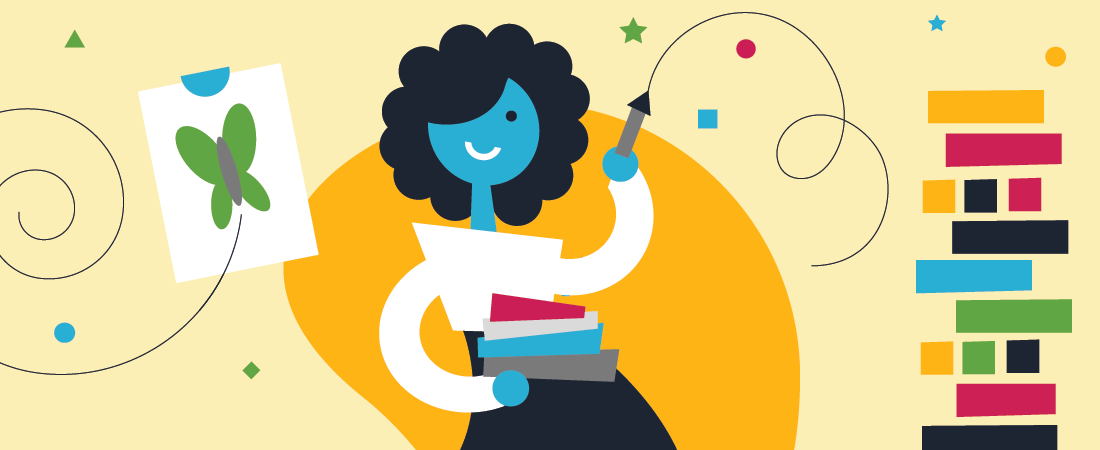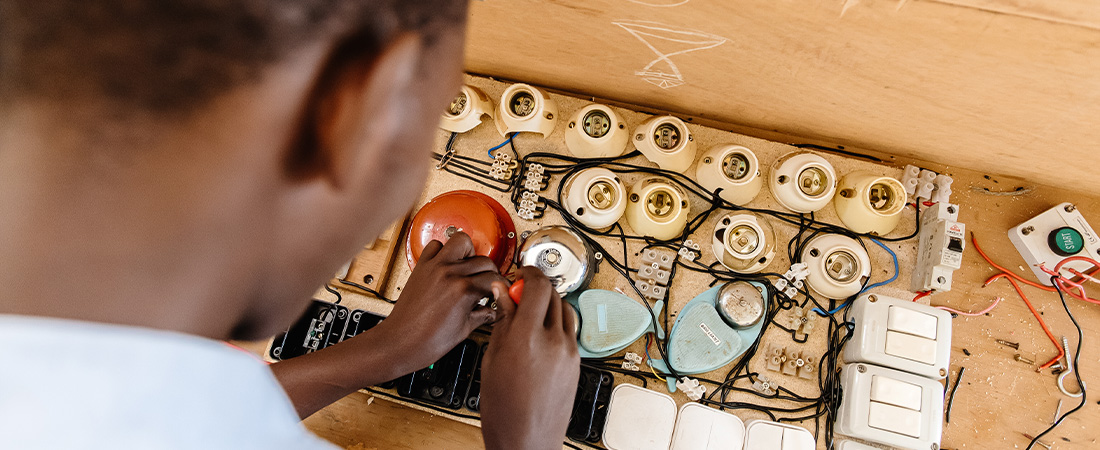Hands-on, Minds-on: Addressing Both Sides of Active Learning

In one classroom, students crafted models of flowers from recycled plastic bottles, identifying and labeling petals, stems, and roots. In another, groups created simple machines—hoes, bottle openers, levers—using spoons and sticks. Both lessons were lively, collaborative, and creative.
But these classes, evaluated as part of our four-year partnership with the LEGO Foundation’s Learning Through Play with Technology (Tech & Play) initiative, also revealed common challenges.
While students’ hands were busy, were their minds equally engaged? Were they thinking about how the parts of a plant function, or simply how to make the flower look nice? Were they exploring how a lever transfers force, or just trying to make something work without reflecting on how or why the lever makes lifting easier?
That gap between doing and thinking—between hands-on and minds-on—sits at the heart of effective active learning.
What Is “Hands-on, Minds-on” Learning?
Hands-on learning makes classrooms feel alive. Students are moving, making, and working together. For many teachers, these types of activities are the primary entry point into student-centered learning.
But when students construct a model or build a project, they need to be thinking about why things work the way they do, testing ideas as they construct their own understanding of the world.1 That’s because the end goal for effective learning is not simply the finished product, but the thinking, reasoning, and conceptual understanding developed along the way.2
This “double engagement” is at the heart of effective teaching, but it’s often the hardest part to get right.
Study Details
Through the Tech & Play Research Collaborative, the LEGO Foundation and EDC worked to integrate playful, student-centered learning in primary schools across Brazil, Kenya, and Rwanda. EDC led the Tech & Play Research Collaborative, partnering with:
- LEPES at the University of São Paulo (Brazil)
- Education Design Unlimited (Kenya)
- Three Stones International (Rwanda)
Together, the teams examined how teachers introduced learning-through-play approaches in real classrooms—and what supported or limited those efforts.
What Did Our Study Find?
Across these countries, students and teachers responded enthusiastically to hands-on lessons. Building, experimenting, and collaborating boosted engagement and motivation.
Yet we found that lessons often stopped short of “minds-on” learning. Students were active, but their thinking stayed on the surface.
Programs and teachers often faced immense challenges in designing hands-on activities that engaged students, limiting their ability to connect the creative activity with deeper conceptual understanding. This aligns with research showing that, even in well-resourced countries with traditions of student-centered pedagogy3, teachers regularly face challenges in connecting student-centered approaches to classroom practice.
Still, there were areas of promise:
- In Brazil, students designed a class library, debated strategies on how to encourage young people to read more, and wrote reviews of their favorite books to encourage other students to read them.
- In Rwanda, a teacher reworked a science lesson to engage students in small groups, testing their understanding of energy transfer by using circuits to light up a light bulb.
- In Kenya, a teacher shared tablets among 60 classmates to photograph examples of water use and waste around their school grounds. The groups used the tablets to photograph examples of water wastage and water conservation around the school, then debated challenges and solutions related to water conservation, connecting their observations to broader environmental issues.
These examples show what’s possible when hands-on activities are paired with clear learning goals and strong teacher support.
Moving Forward
Shifting to student-centered teaching isn’t just about introducing new activities—it’s about aligning those activities with the concepts students need to grasp. Active learning works best when pedagogy and content design move together. Teachers need both the freedom to experiment and the structure to ensure students build understanding, not just artifacts.
That balance, between doing and thinking, is what turns playful learning into lasting learning.
To support this, EDC and its partners are developing a Collaborative Design Toolkit to help design edtech for both hands-on and minds-on engagement, particularly for efforts in low- and middle-income contexts where resources are limited and systems are complex. The toolkit will guide teams to co-design lessons that are contextually grounded, conceptually rich, and responsive to local realities.
Pilot testing is underway in Kenya, with a full release planned for December.
Resources
Learn more about our findings and publications from the Tech & Play Research Collaborative:
- Lessons Learned from the Tech & Play Initiative: Insights to Inform Program Design and Implementation
- KPLAY Implementation Research Brief: Supporting the Transition to Student-Centered Teaching in Kenya
- Improving Science and Technology Instruction in Rwandan Primary Schools: Right to Play Plug-In-Play Project Implementation Study Brief
- Supporting School-Wide Teacher Change with the Creative Schools Program
1National Research Council. (2000). Inquiry and the national science education standards: A guide for teaching and learning. Washington, DC: National Academy Press.; Parker, R. & Thomsen, B. S. (2019) Learning through play at school. The LEGO Foundation.
2de Jong, T. (2019). Moving towards engaged learning in STEM domains; there is no simple answer, but clearly a road ahead. Journal of computer assisted learning, 35(2), 153-167; National Research Council. (2000). Inquiry and the national science education standards: A guide for teaching and learning. Washington, DC: National Academy Press.; Shute, V. J., Sun, C., & Asbell-Clarke, J. (2017). Demystifying computational thinking. Educational research review, 22, 142-158.
3Aditomo, A., & Klieme, E. (2020). Forms of inquiry-based science instruction and their relations with learning outcomes: Evidence from high and low-performing education systems. International Journal of Science Education, 42(4), 504-525.







